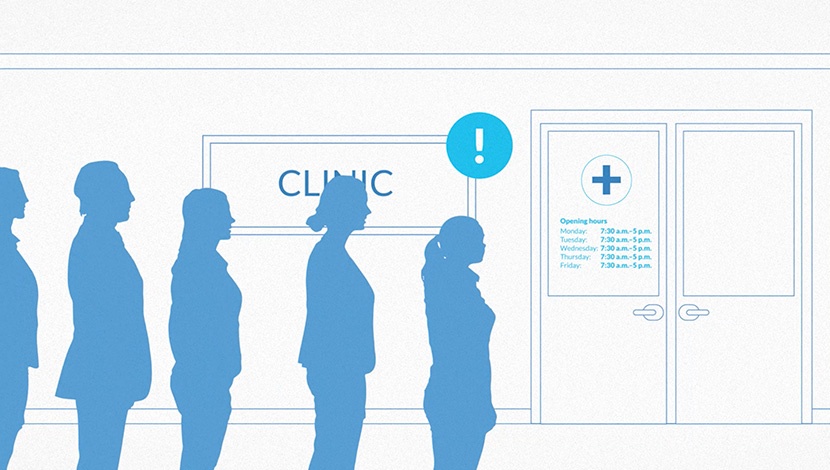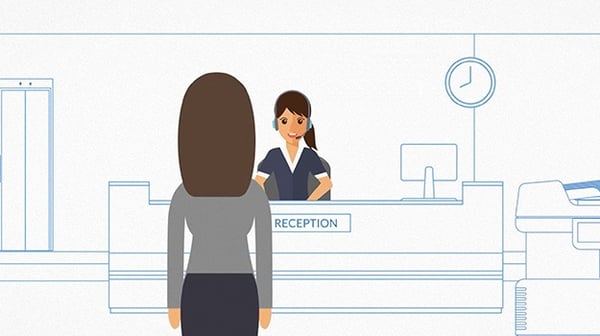
Medical clinic managers are not consulted as often as physicians on questions of access to health care services. But a clinic director can make a huge difference in the accessibility of services by implementing innovative practices or integrating new technologies in their facility.
In the context of its participation in the 49th Ontario Medical Group Management Association Conference, the Petal team would like to share the main management challenges it has taken on in collaboration with clinic managers. You’ll see that the role these managers play in ensuring an effective health care system in Canada is not to be underestimated.
1. Decrease Telephone Wait Times
In clinics that receive a high volume of calls, patients often find themselves waiting on hold, which is frustrating and adds to the workload of administrative staff. It takes approximately 162 seconds on average to book an appointment for a patient over the telephone, which represents about four hours of work each day for a medical clinic with five full-time physicians.
More and more managers are choosing to offer online appointment booking rather than hiring new staff to address this issue. The advantage of this solution is two-fold: patients who use the Internet can make appointments at any time, and those who prefer using the telephone will spend less time on hold. In our experience, within just a few weeks of implementing a personalized online portal, a clinic could see up to half of its appointments being booked online by patients themselves.
2. Reduce the Number of Missed Appointments
In Canadian medical clinics, the average rate of missed appointments often reach 10% — a situation that affects both access to health care services and physician revenues. In Quebec, this translates to estimated losses of $140,000 annually for a medical clinic with six full-time physicians.
There are two proven methods for reducing the number of missed appointments: reminders sent by the clinic and confirmations sent by the patient. Reminders reduce the risk of forgotten appointments, and confirmations allow the clinic to free up time slots assigned to patients who cancel their appointments in advance. Sending these reminders and confirmations manually is repetitive, time-consuming work — it’s in the best interest of all clinics to switch to automated reminders and confirmation requests for each appointment scheduled.
3. Ensure a High Attendance Rate for Physicians
“Attendance rate” refers to the ratio of the number of times a patient consults their family physician to the number of times they consult another doctor. The easier it is for patients to access their family physician, and the more satisfied they are with the service they receive, the higher the clinic’s average attendance rate will be. And improved attendance rates translate to better medical follow-ups.
A good way to boost physicians’ attendance rates is to offer patients a family account accessible online through the clinic’s appointment booking portal. When patients can easily view their appointment history and their family physician’s availability, they’re more likely to return to the same clinic. However, if patients are using an online portal that is not accessible from the clinic’s website and that could send them to other health care facilities, there is a risk attendance rates could drop.

4. Lighten the Administrative Workload
Most repetitive tasks can be automated, thereby increasing staff satisfaction by freeing them up to perform value-added tasks. More and more clinics are automating appointment reminders, for example, but there is always room to innovate and go even further with automation.
Following our discussions with some clinic managers, we developed a form to automate the processing of service requests. Patients fill out these customized forms when booking appointments through the clinic’s online portal and are automatically guided to the right type of consultation—they can even upload medical documents. In any case, the secret to a significantly lighter administrative workload lies in identifying repetitive tasks and offering tools to automate them.
5. Centralize Appointment Management
In medical clinics that use both an electronic medical record (EMR) and an online appointment booking portal, the staff is sometimes forced to manually transcribe every appointment made online—a time-consuming process that increases the risk of error. For example, the same time slot could be assigned to two different patients if one books their appointment online at the same time as the other is making theirs over the phone.
In other words, centralizing appointment management is preferable to working with two separate systems. For many of the clinic managers we met with, the ability to synchronize with the existing EMR is a must for any new technological tool.
Technologies at the Service of Clinic Managers
For nearly a decade, the Petal team has been interested in identifying the challenges of the Canadian health care system and finding ways to overcome these challenges through technology. If you work in a medical clinic that is looking to update its tools, feel free to contact us!
Understand the 7 most important benefits when using a patient scheduling software.
